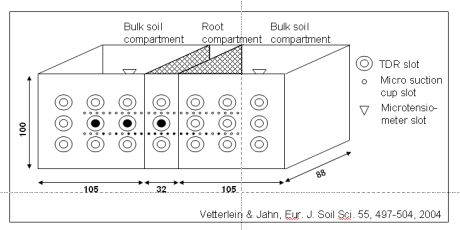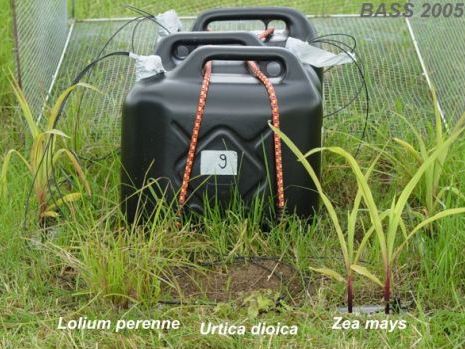Bioavailability of arsenic
- soil-plant-food transfer of As with special emphasis on rhizosphere processes
Processes on the micro scale (rhizosphere, micro sites) can have a large impact on the macro scale. Thus, understanding such processes is essential for risk assessment in respect to the bioavailability of soil contaminants such as heavy metals and arsenic.
Arsenic contamination of drinking water, soil and food is not only a problem in south-east Asia, where it is regarded as the largest environmental hazard in the last century. There are also areas in Germany where As concentrations are far beyond the threshold levels. In April 2004 a Helmholtz-University Young Investigators group was established addressing this topic.
Through the cooperation of several groups from the Martin Luther University Halle-Wittenberg and the Helmholtz Centre for Environmental Research - UFZ the compartment system approach, which combines the in situ measurement with micro sensors (tensiometers, TDR, Redox), and micro scale soil solution collection with increasing distance from the root surface, with an approach of modelling transport processes in the rhizosphere, can be extended by the analysis of secondary plant metabolites (organic acids, amino acids, peptides, enzymes, phytochelatins and phy-tosiderophors) in the plant and in the soil solution. As-Species analysis can be conducted in soil solution, soil extracts and plant material. Experiments are conducted under controlled conditions with artificial substrates, which increase in complexity for example by the addition of different amounts and types of minerals (goethite, ferrihydrite, allophanes).

Fig.1.: Setup of the compartment system
This methodology enables the understanding of uptake and feedback processes at the root-soil interface taking into account the formation of gradients as a result of uptake, mass flow (convection) and diffusion and provides thus information beyond that derived from batch experiments with soils or hydroponic studies with plants. In combination with the modelling approach it should be possible in the end to extrapolate from the compartment system to the radial geometry in natural systems. This would be the interface to other groups, which move from a single plant to the field and to the landscape.

Fig. 2.: Field experiment
Investigations under controlled conditions are complemented by field experiments with a bio indication system. Arsenic uptake by the bio indicators is related to Arsenic binding forms in the soil. In addition soil samples from the field undergo varying redox conditions in the laboratory following a standardised procedure. Soil solution is sampled at regular intervals in this system to relate As-speciation in soil solution to the dynamics of soil redox potential.
